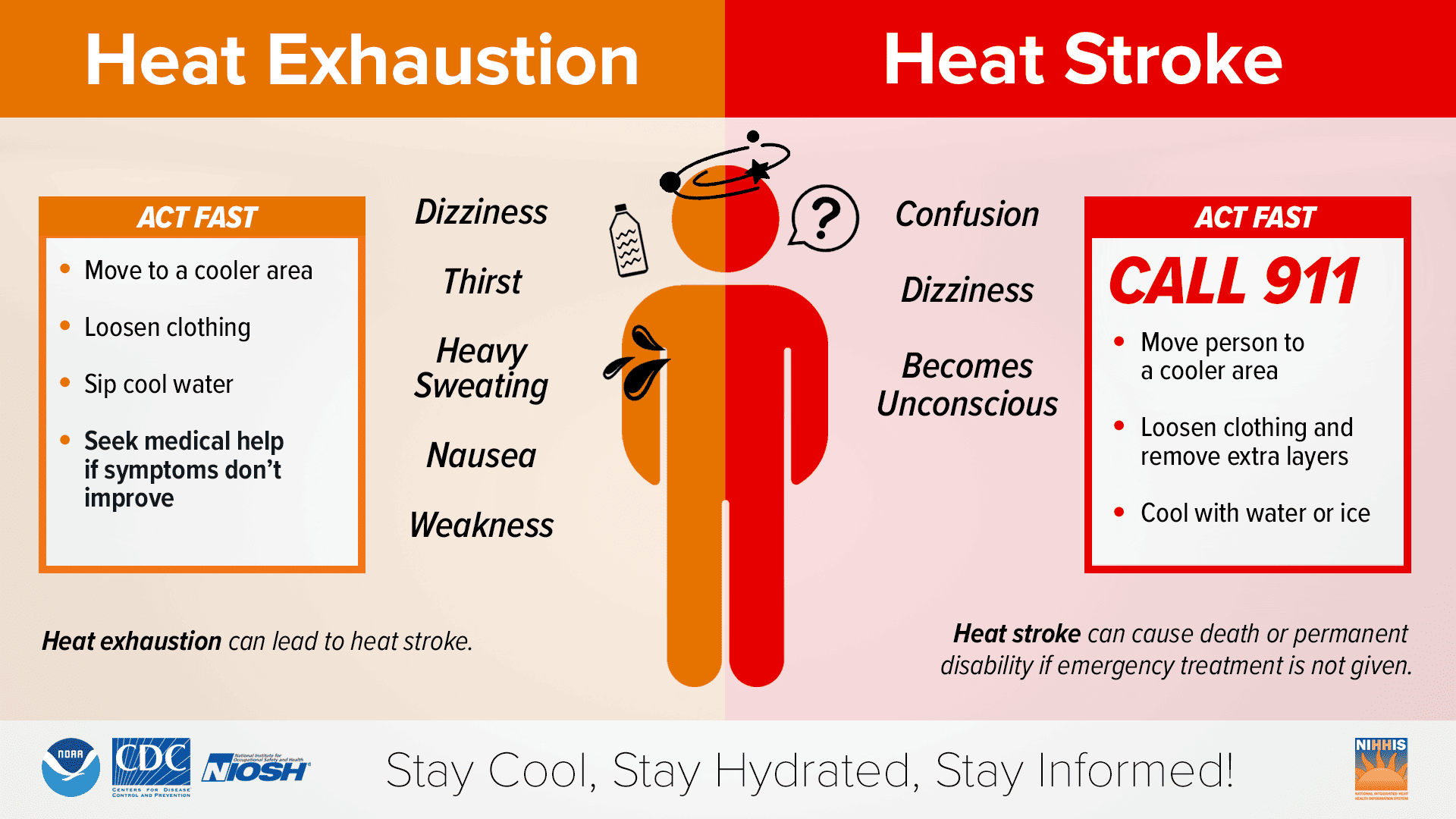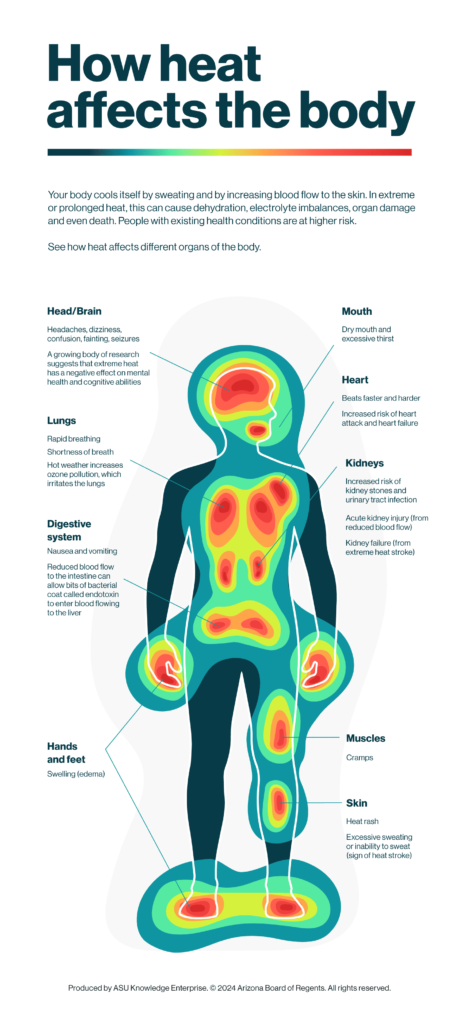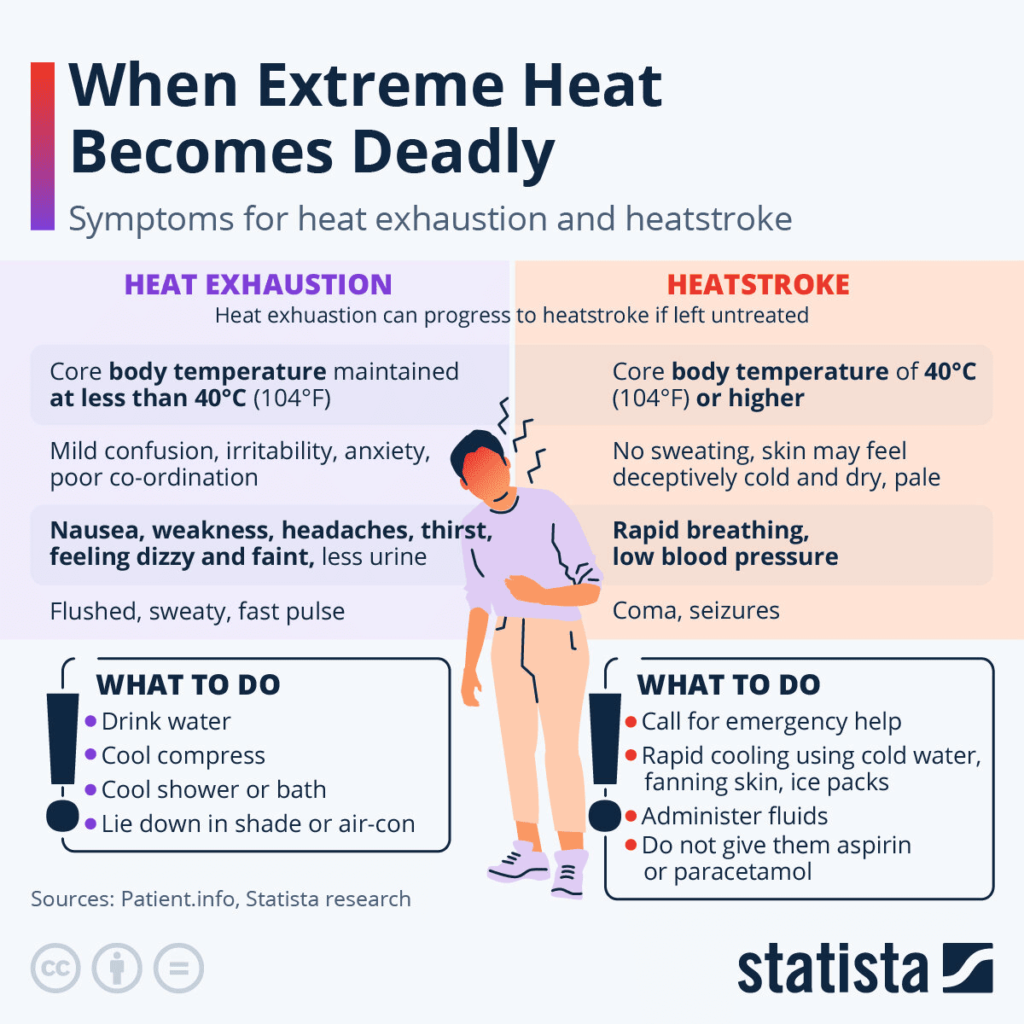
Introduction
In recent years, global warming, heat waves, and climate change have made excessive heat a significant concern worldwide. The impact of high temperature on human health and mental well-being is increasingly recognized. This article explores the effects of excessive heat, the advantages (if any) and disadvantages for humans, and outlines practical strategies for prevention, treatment, and adaptation. Drawing on latest medical research, WHO fact‑sheets, New England Journal of Medicine, The Lancet, CDC, Wikipedia, and clinical guidelines, this SEO‑focused guide aims to be both authoritative and actionable—targeting keywords such as heat stroke, heat exhaustion, mental health, heat stress prevention, and adaptation to extreme heat.
Key SEO Keywords: heat-related illness, mental health and heat, heat stroke prevention, heat wave adaptation, heat stress effects.

Main Body
1. What Is Excessive Heat? (Definitions & Context)
Excessive heat refers to prolonged exposure to temperatures notably above normal ranges, especially during heat waves—periods of abnormally high ambient air temperature and humidity that challenge the body’s ability to regulate internal temperature. The heat index helps gauge “feels-like” temperature by combining humidity and air temperature Wikipédia. According to the WHO climate fact‑sheet, many urban areas—especially urban heat islands—trap heat, compounding health risks Organisation mondiale de la santé.
2. Physical Health Effects: From Minor to Severe
Heat-related illnesses range across a spectrum:
- Heat cramps: painful muscle spasms from electrolyte loss
- Heat syncope: fainting due to blood pooling
- Heat exhaustion: fatigue, dizziness, nausea, clammy skin
- Heat stroke: body temperature above 40 °C (104 °F), rapid pulse, confusion, potentially fatal SAGE JournalsService Météorologique National

Example chart (top left image): symptoms of heat exhaustion vs heat stroke .
According to The New England Journal of Medicine (2024) a temperature sustained above 40 °C (104 °F) for six hours increases mortality from certain diseases by up to 50% timesofindia.indiatimes.com+4sciencearena.org+4arxiv.org+4. The BMJ guidelines emphasize rapid recognition, removal from heat, and cooling measures as critical steps in treatment bmj.com+1. Treatment protocols outlined in NEJM include rapid cooling, rehydration, and management of organ damage nejm.org.
A scientific statement in the European Heart Journal underscores how heat exacerbates cardiovascular disease (CVD), especially in socially vulnerable populations, and outlines the epidemiology and physiology of heat-related CVD academic.oup.com.
3. Psychological & Cognitive Effects
Excessive heat does not only harm the body—it significantly impacts the mind. A growing body of research links high temperatures with:
- Increased rates of aggression, violence, and domestic conflict Wikipédia+1
- Spikes in depression, anxiety, and even suicide attempts/completions; suicides rise ~0.7–3% per 1 °C increase depending on region Wikipédia
- Impaired cognitive performance, memory, attention, decision-making, and decreased productivity (daily income falls ~1.7% per °C above 15 °C) Wikipédia
The APA and other psychiatric sources note that heat waves raise emergency visits for psychiatric conditions, including mood disorders and substance abuse, and impact those on psychotropic medications, which impair thermoregulation newporthealthcare.com.
Studies find that people with preexisting mental illness are more vulnerable: they may misinterpret heat warnings, become more physically agitated, less hydrated, and more isolated—thus at much higher risk during heat events psychiatrictimes.com.
Sleep disruption is a major side effect of heat. Wearable device data analyzed across 68 countries indicate that high nighttime temperatures delay sleep onset and reduce overall sleep, particularly for older individuals and women, with no short-term acclimatization arxiv.org. This leads to fatigue and worsened mental resilience.
4. Potential Positives of Heat Exposure?
While excessive heat is broadly harmful, limited controlled heat exposure (e.g. sauna therapy) may benefit mood or metabolic resilience. An emerging concept in media reports (e.g. summer sauna sessions) suggests short, supervised heat exposures may activate cooling mechanisms and improve mood in some individuals, although this is still under study thetimes.co.uk. However, this is distinct from uncontrolled environmental heat stress.
In seasonally comfortable warmth, some people report improved well-being, especially when biodiversity/greenspace mitigates heat, suggesting an inverted U-shaped relationship: moderate warmth up to a point may enhance mental health, but beyond that harms it psychiatry.orgverywellmind.comthetimes.co.uk.
5. Vulnerable Populations
Certain groups face heightened risk:
- Older adults, infants, pregnant women, and people with chronic conditions (heart, respiratory, renal) psychiatry.org.
- Outdoor workers and athletes exposed to intense heat risk hyperthermia and heat stroke, with occupation-related deaths rising globally sciencearena.org+1.
- People with mental illness, especially those on psychotropic medications, are physiologically and behaviorally more susceptible to heat damage ghhin.orgpsychiatrictimes.comcdc.gov.
6. Advantages? Why Heat May Benefit Well‑being (Limited Context)
- When used therapeutically (e.g. controlled sauna), may stimulate endogenous cooling pathways, with some reports of temporary relief of low mood thetimes.co.uk.
- Sunshine and moderate warmth can help vitamin D production, enhance mood, and promote social outdoor activity—but only when heat remains within comfortable limits.
7. Prevention & Mitigation Strategies
Individual Measures:
- Stay hydrated, drink often before thirst, and monitor urine color Wikipédia+1
- Wear light‑colored, loose clothing, use hats, ventilation, avoid peak sun hours Wikipédia
- Cool the body: cold showers, wet clothing, and avoid relying solely on fans—fans may even increase risk above 90 °F unless skin is dampened first washingtonpost.comWikipédia
- Schedule physical activity during cooler hours (morning or evening) mcpress.mayoclinic.org
Community and Policy-Level Strategies:
- Cooling centers (air‑conditioned public spaces) are effective mitigation tools during heat waves, especially for vulnerable populations Wikipédia.
- Heat action plans: behavior-based strategies, early warnings, and biophysical interventions can prevent many deaths associated with heat events thelancet.com+1.
- Urban design strategies: increasing greenspace, implementing cool roofs, and mitigating urban heat islands reduce community heat exposure Organisation mondiale de la santéWikipédia.
- Worker protections: mandated rest, hydration, shade, shift scheduling for outdoor labor; guidelines endorsed by WHO and The Lancet for vulnerable workers thelancet.com.
8. Medical Treatment & Clinical Protocols
When heat illness progresses:
- Rapid cooling (cold water immersion, ice packs), active rehydration, and close monitoring of vital signs are essential nejm.orgbmj.com.
- Manage potential organ damage—especially cardiovascular, renal, neurological systems. Hospital protocols emphasize early intervention and follow-up for survivors, as long-term impairment including brain damage is possible (e.g. after 1995 Chicago heat wave survivors) Wikipédia+1.
- For patients with mental illness, medication reviews before heat waves are critical; psychotropics like antipsychotics, antidepressants impair thermoregulation and increase risk psychiatrictimes.com.
Key Points Summary (SEO‑friendly list)
- Heat-related illness includes cramps, exhaustion, heat stroke—with escalating health risks.
- Mental health risks include depression, anxiety, suicidal ideation, aggression, and cognitive decline.
- Vulnerable groups: elderly, children, pregnant women, chronic disease patients, outdoor workers, psychiatric patients on medication.
- Prevention: hydration, cool environments, clothing, activity timing, cooling centers, urban planning, heat‑action responses.
- Treatment: rapid cooling, rehydration, medical supervision, organ monitoring.
- Policy and public health: heat action plans, awareness campaigns, community interventions, worker protections.

Conclusion
In summary, excessive heat—especially as climate change intensifies heat waves worldwide—poses grave threats to both physical health and mental well-being. While moderate warmth may offer minor mood benefits under certain conditions, the overall disadvantages far outweigh any potential positives. The effects range from heat stroke, organ failure, and death, to cognitive impairment, mood instability, sleep disruption, and rising rates of violence and suicide.
Prevention and adaptation are essential: individual strategies (hydration, clothing, cooling habits, scheduling), medical interventions, and community-level plans such as cooling centers, urban green infrastructure, and policy-driven heat action plans. Vulnerable populations require extra attention—from elderly individuals to those with psychiatric conditions and outdoor laborers.
With mounting scientific consensus—from The New England Journal of Medicine, The Lancet, CDC, BMJ, and leading medical practitioners—urgent public health action is needed. Awareness, education, and infrastructure resilience can help reduce the morbidity and mortality associated with heat. By protecting bodies and minds alike, societies can better navigate the challenges of a hotter world.
References & Citations
- Heat illness definitions and clinical protocols: BMJ, NEJM, Mayo Clinic SAGE Journalsbmj.comnejm.orgmcpress.mayoclinic.orgcdc.gov
- Physical mortality risks: NEJM 2024 statistical analysis sciencearena.org
- Mental health impacts: APA, Psychiatry Times, systematic reviews, suicide and aggression data psychiatry.orgpsychiatrictimes.comghhin.orgcharliehealth.comWikipédiasciencedirect.com
- Sleep disruption: wearable data study by Minor et al. arxiv.org
- Worker risk and occupational guidance: ClimateCHIP, The Lancet, EPA occupational deaths graph climatechip.org
- WHO and Wikipedia for cooling centers, urban heat island, general heat health context Wikipédia
- Media-based context and potential positives: news articles from APA blog, Washington Post, The Times psychiatry.org







